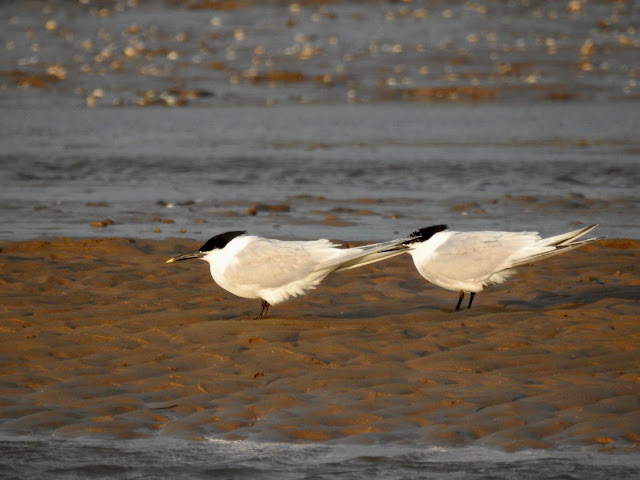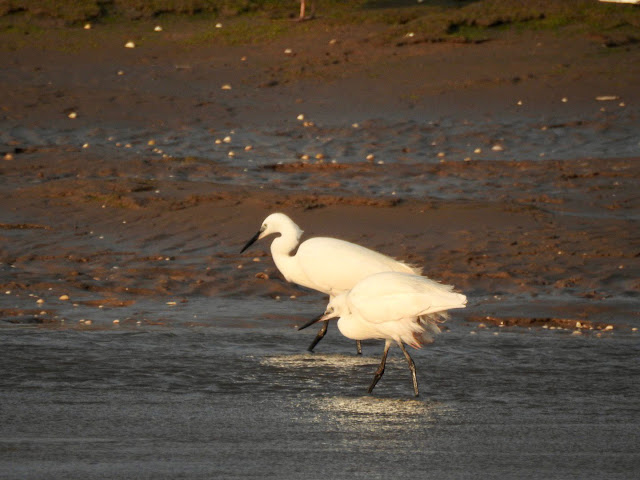Weather: S force 3 drizzle at times
As we are now at the height of summer and before the autumn season arrives, a visit at this time inevitably notices the breeding birds. The luxorious growth in the paddocks ensured a wet experience for the ringer, nevertheless 3 juvenile Linnets were ringed also an adult in breeding plumage. Although the young birds are now fully mobile they have not achieved fully grown flight feathers or tail.
Several young Swallows were flying around the island, and juvenile Meadow Pipits were also present. Seven more Swifts were recorded, continuing the run of records this month. Best record of the day however were of 3 Mute Swans flying across the shore early on. The immature male Eider showed, and 6 Shelduck were around the islands. Only 3 Little Egrets and 2 Grey Herons were on the shore. About 10 Sandwich Terns were noted. Maintenance work continues out on the wind farms despite the poor visibility in the drizzle. Photos JE


































